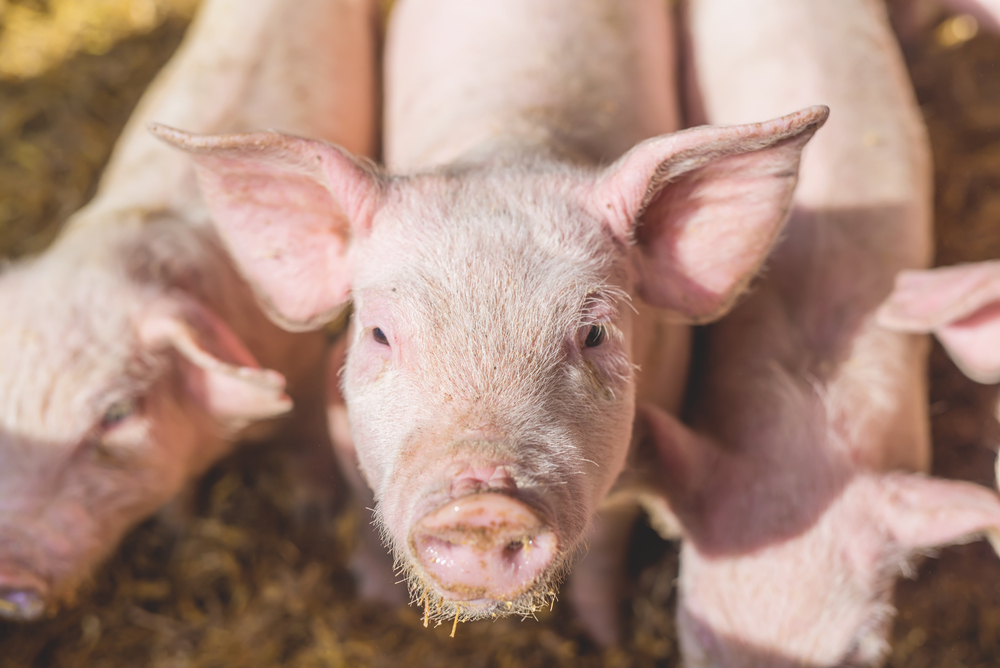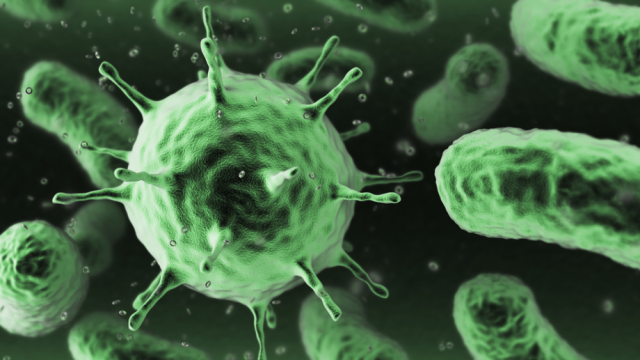A team of scientists has discovered a gene that renders bacteria resistant to colistin, a so-called last-resort antibiotic doctors use when other drugs have failed. This is very bad news, and yes, it could usher in a post-antibiotic era — if we let it. But here’s why you shouldn’t panic just yet, and what you can do that would be far more productive.
It’s always the same story with antibiotic resistance: we develop a drug (technically, in most cases, we discover a drug in nature and figure out how to manufacture it in bulk), it works great for a while, and then some microbes start to show signs of resistance. Soon, lots of bacteria are resistant, and pretty soon after that, we have to stop using it. This has happened with numerous antibiotics that were once the workhorses of modern medicine, including penicillin.
The reasons for this pattern are twofold. First, bacteria reproduce insanely fast; some have generation times of less than an hour. Organisms that multiply quickly also accumulate genetic mutations quickly, and any mutations that incur an advantage — say, a novel form of a gene that produces a protein that protects against an antibiotic — spread through the population like wildfire. It’s like watching evolution in overdrive.
The other half of the equation has to do with how we use antibiotics, which is very, very irresponsibly. Many doctors overprescribe them, or worse, prescribe them preventatively. (I have had doctors write me scripts for antibiotics when I wasn’t sick, so that I could self-diagnose my own symptoms. And while I appreciate the vote of confidence, I’m pretty sure that’s not how it’s supposed to work.)

The vast majority of antibiotics in the US are fed to livestock. Image Credit: Shutterstock.
But issues with how doctors use antibiotics pale in comparison to the problem of animal agriculture. In the United States, 80% of antibiotics — a whopping 13.6 million kilograms a year — are fed to poultry and livestock, most of them, for non-therapeutic reasons. The livestock industry treats antibiotics like growth hormones; a shortcut that can hasten the time to slaughter, while allowing farmers to pack more animals into overcrowded and unsanitary conditions.
The trouble is, the more we use antibiotics, the faster they spread into our environment, and faster the bugs we’re trying to kill become resistant. That’s why we’ve seen a string of nasty, antibiotic resistant infections crop up in recent years. The most worrisome cases involve bugs that are resistant to multiple drugs, like the infamous MSRA, or genes that are very easily swapped between bacteria, as appears to be the case with the new colistin-resistance gene, MCR-1.
Writes New Scientist in an article about MCR-1:
The team warns that because this gene can travel between bacteria, it’s inevitable that bacteria will develop “pan-drug resistance”, becoming unbeatable by any known form of antibiotic. Ominously, the gene seems to move easily between the strains of the common human pathogen Escherichia coli, as well as other common bacteria such asKlebsiella and Pseudomonas, which cause a large proportion of blood, urinary and gut infections.
Together, existing forms of antibiotic resistance in these bacteria already cause tens of thousands of deaths in Europe and the US, says Mark Woolhouse of the University of Edinburgh, UK. “Obviously, a new form of resistance can only increase that number.”
As I said before, this is bad news, and I’m not trying to downplay the danger posed by an easily spreadable, pan-drug resistant gene. But this isn’t the first time we’ve heard reports about a nightmare superbug that can tolerate a “last resort” antibiotic. (And by the way, that “last resort” moniker has been applied to several different drugs over the past few years, so I think it’s fair to say that objectively, none of them actually is.)
Unfortunately, every time a new superbug comes along, the media turns it into a frenzied apocalypse scare. Take this excerpt from a BBC article that ran last week:
They said that resistance would spread around the world and raised the spectre of untreatable infections.
It is likely resistance emerged after colistin was overused in farm animals.
Bacteria becoming completely resistant to treatment – also known as the antibiotic apocalypse – could plunge medicine back into the dark ages.
That’s from the opening of the article. Scary stuff! But in case that’s as far as you read before closing your laptop and high-tailing it to your End Times bunker, let me share some telling words from the end of the piece:
New drugs are in development, such as teixobactin, which might delay the apocalypse, but are not yet ready for medical use.
Teixobactin, if you haven’t heard of it, is a new class of antibiotics discovered in soil bacteria earlier this year. When teixobactin was first published, it was lauded as a “game-changer” in the fight against antibiotic resistance. Here’s an excerpt from an article I wrote back in March explaining why:
It’s the first new class of antibiotics we’ve discovered in nearly thirty years, and so far, it’s killed every pathogen we’ve thrown at it, including several highly drug-resistant strains of staph. Unlike most antibiotics, which target critical bacterial proteins, this drug attacks the lipid molecules bacteria use to build new cell walls. Vanomycin, another antibiotic that targets cell wall precursors, worked for over 40 years before bugs started to develop resistance.
As the BBC points out, teixobactin is still years away from commercialization, and there’s no guarantee the drug will ever make it to market. But that’s not the point.

iChip, a new technology that allows scientists to culture bacteria found in soil and hunt for useful drugs. Image Credit: Slava Epstein.
The point is, whenever bacteria develop resistance to antibiotics, the solution is to find new ones — things they haven’t encountered before and that they have got no defences against. In fact, what’s most exciting about teixobactin isn’t the drug itself, but the novel method by which it was discovered: a miniature “lab on a chip” that allows scientists to profile previously unculturable soil bacteria for useful drugs.
Here’s what I wrote about that technology, called iChip, last spring:
So far, iChip is off to an exciting start. It’s collected roughly 10 thousand strains of uncultured soil bugs and uncovered a handful of new antibiotics, including teixobactin. And this is just the beginning — remember, the majority of antibiotics we’ve discovered and developed so far come from a mere 1 per cent of soil bacteria. In the remaining 99 per cent, we expect to find hundreds to thousands more, as well as anti-inflammatories, anti-virals, anti-cancer agents, and immunosuppressives. A veritable treasure trove of drugs.
Nature is a war-zone, and the antibiotics we need are out there, waiting to be discovered. Rather than panicking over the latest resistance scare, we need to focus on supporting the work of scientists developing technologies like iChip, technologies can keep us one step ahead in the evolutionary game.
At the same time, we need to stop letting the livestock industry throw all of our useful antibiotics down the drain. I can’t emphasise that enough. The fact that we’re seeing these awful, multi-drug-resistant infections year after year is a direct consequence of our laissez-faire attitude toward antibiotics over the past half century.
Food companies are beginning to move away from animals raised on antibiotics, but that’s a very new trend and we’ve still got a long way to go. The progress that we’ve seen of late is the direct result of consumer pressure. So rather than throwing up our hands and waiting for an outbreak to destroy civilisation as we know it, let’s focus on dialling up that pressure even further. And on putting our resources toward technologies that could actually turn the tide in this war.
Top image: Shutterstock.
